Stain Removal Tips for Holiday Homes & Airbnb Lets
Running a finger over picture frames, checking under beds and inspecting bathrooms for rogue hairs…the number one complaint from guests staying at holiday cottages is along the lines of “…it was dirty.” If your holiday cottage isn’t clean, guests will leave early, demand compensation and/or threaten to leave a bad review.
It’s therefore essential to keep to a ‘stringent’ housekeeping schedule during changeovers, to keep your holiday rental in top condition. However, it’s inevitable that, as well as the signs of wear and tear, there’ll be the odd stain to deal with and remove.
Rather than spending your hard-earned income on replacing items, it pays to know the best tips, tricks and cleaning hacks; especially as you might only have limited time before your next guests arrive!
Here are some tips to help you remove those stubborn stains…
Bedding, linen and towels
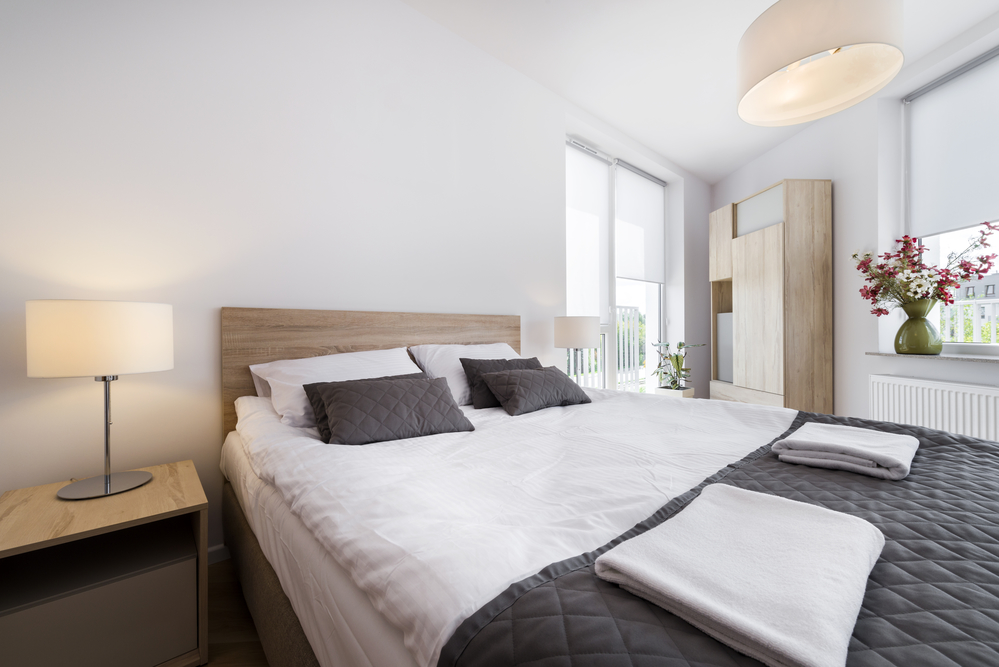
With bedding and towels costs running into three figures, replacing stained items simply isn’t cost-effective. Luckily, most stains are easy to remove if caught before washing and with a bit of perseverance.
Try to avoid putting bedding or towels into the washing machine without carefully checking them first. Guests have a habit of hiding stains due to embarrassment – or to avoid being charged for damaged items.
1. Yellow spots (due to sun cream): Bedding – Try a stain remover from Ariel or Vanish. Or rub in a limescale/calcium remover before washing, such as Lidl’s W5.
Towels – Soak them for two hours in a solution of ammonia diluted with water.
2. Urine stains on mattresses: Try using hydrogen peroxide (30%), dabbing the fabric with a sponge with a few drops of detergent and disinfectant. Sprinkle baking soda over the area to absorb any excess liquid. Leave for a few hours then vacuum off the baking soda.
3. Blood: Dab with a cloth dipped in ice-cold water. Soak with washing-up liquid and cold water if the stain persists and dab dry.
4. Vinegar: It can be used for all sorts of stains. Simply apply to the affected area, leave in the sun for an hour or so then wash.
5. Lipstick stains: If the fabric is machine washable, saturate the spot with hair spray, let it sit for 10 minutes, then dab with a damp cloth or sponge to remove. Finally, wash as usual in the machine to remove any residual stain and spray.
6. Removing ‘smokey’ odours from textiles: Fill the bathtub with hot water. Add one cup of white vinegar, and soak the fabric item/s.
Carpets and upholstery
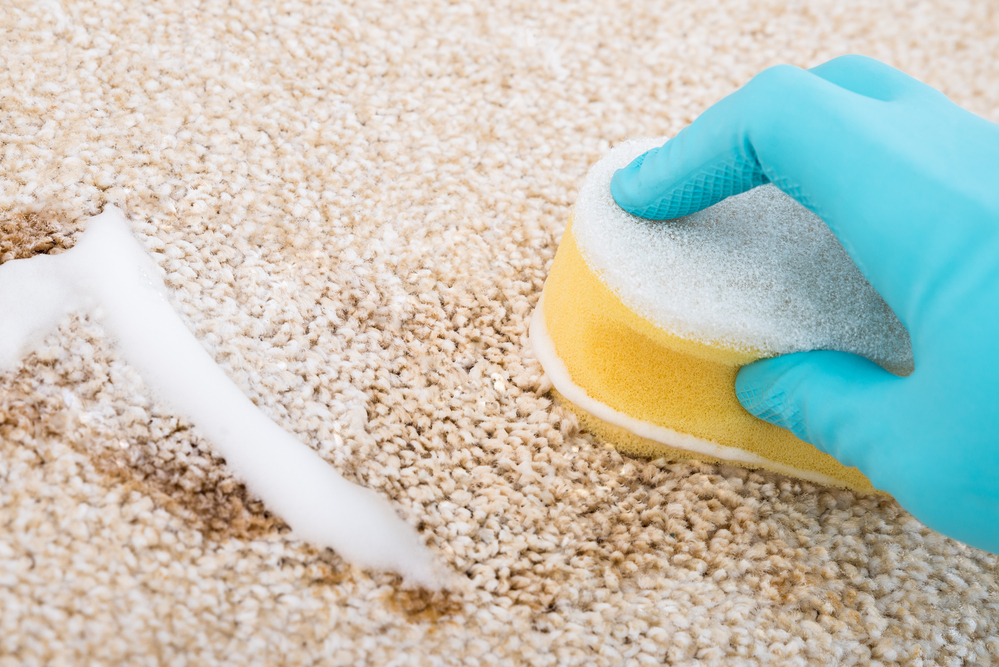
7. Red wine stains: Act immediately, blotting as much of the stain as possible, and soak with sparkling or soda water. Sponge with soapy water or try using carpet shampoo.
8. Ink stains: Use a small amount of hydrogen peroxide solution, also try hand sanitiser or hairspray.
9. Wet stains: Soak up with a towel, sprinkle baking soda to soak up the remainder of the spill and gently vacuum. Then mix equal parts water and white vinegar and blot the stain with a clean cloth until it is gone. Rinse the vinegar and let it air dry.
10. Chewing gum: If possible, freeze the item with ice then scrape off. Alternatively, heat using a hairdryer, then scrape off the melted gum. Also, try warming a small amount of white vinegar to pour over the gum. Let it sit for a few minutes before removing and repeat as necessary.
You could always try to use a steamer on the area too, to try and lift the gum from the fabric more easily.
11. Wax: Harden with ice then scrape off as much as you can. Place a kitchen towel or brown paper bag over the wax and use an iron to lift the remaining wax.
12. Vomit: Remove by scraping up as much as possible then sponge with cold water. Cover with bicarbonate of soda, allow to dry, then vacuum off. Sponge with a mild detergent and dab dry. The great thing about this tip is that the bicarbonate of soda will also neutralise any unpleasant smells.
13. Mould: Anti-mould sprays (such as HG anti-mould) help you to keep on top of mouldy showers and avoid black/pink silicone.
14. Glitter/sand: After hoovering, use a lint roller (for jackets and clothing) to pick up these tiny particles from fabrics and carpet.
15. Remove stains and odours from your couch: As long as your couch is covered in fabric (and not leather), you can try sprinkling baking soda on it. Baking soda helps release smells and breaks up stains in the fabric.
Wait for at least 20 minutes (and up to an hour) before hoovering the powder off – using a brush attachment.
16. Remove pet hairs from fabrics and carpets: Wear a dampened rubber glove and run your hand over the hair-covered areas. You’ll find that the hair clings to the glove – then, just rinse in the sink (with a sink strainer over the sink to avoid the hair clogging up your drain!)
Using a window squeegee also works.
17. Use a razor to remove paint stains:A razor can come in handy for carefully scraping off dried paint stains.
18. Banish nail varnish stains with vodka: Remove spilt dots of nail polish from carpets and fabric by popping a clear spirit like vodka on the stain and rubbing it away with a microfibre cloth.
19. Clean leather upholstery: Mix 1-part mild liquid soap with 8 parts distilled water in a spray bottle. Spray onto the leather and wipe off.
20. A quick recipe for home-made carpet cleaner: Some swear by mixing these three ingredients: Hydrogen peroxide, water, and lemon juice. By mixing a 1/3 of a bottle of hydrogen peroxide with 2/3 water, and then add five drops of lemon essential oil, it’s supposed to break down stains – with the lemon oil helping to release some of the ‘stickier’ particles. (Ensure you use an opaque bottle so that hydrogen peroxide retains the qualities needed for the cleaner to be most effective.)
To use, liberally spray the carpet with the mixture, leave for a minute or two and then use a scrubbing brush to loosen the fibres. Wipe and blot to remove the stains, which should have now moved to the surface of the carpet – due to the cleaning liquid.
A word of warning – hydrogen peroxide has been known to lighten some darker colours of flooring, so ensure you patch test it first to make sure that it doesn’t leave behind a new kind of mark. If you do see that it lightens the floor a little, add a little more water to the mixture to dilute the bleaching effect.
21. An alternative method for stubborn carpet stains: Combine one-part white vinegar with two parts water, add to a spray bottle and apply to the affected area. Put a damp rag over the spot and use the iron on the steam setting for about 30 seconds.
If the stain is stubborn, repeat the steps, this should make a difference.
Hardwood floors
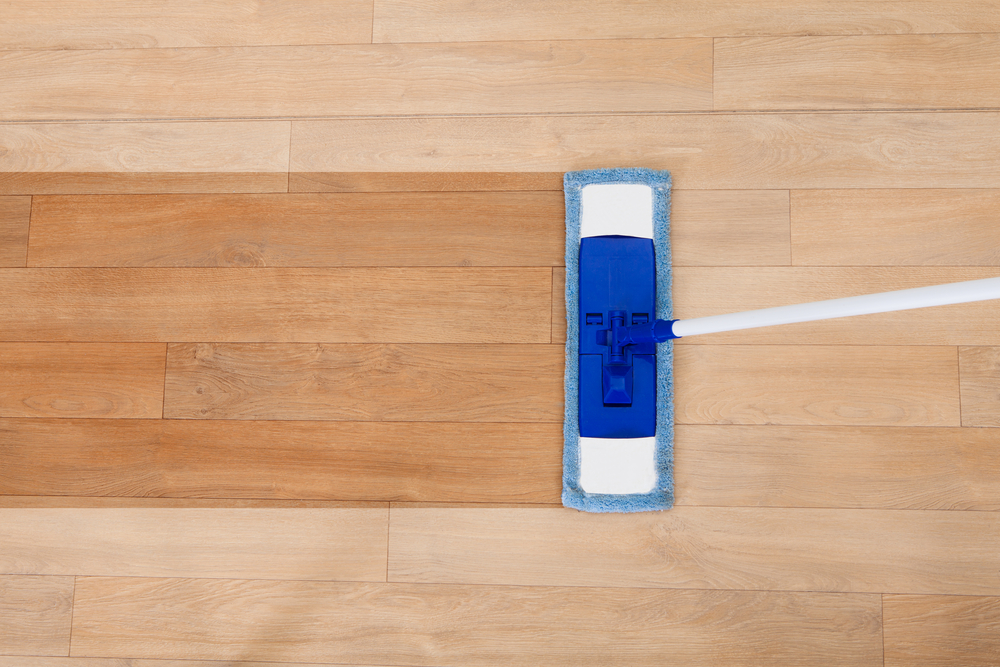
22. Permanent marker: Remove from hardwood floors by using a dab of toothpaste. Then, rub like crazy with a damp microfibre cloth or paper towel.
23. Skirting boards: You can also give skirting boards a quick clean using tumble dryer sheets or wet wipes. This not only gets up the dust but coats the area, so dust doesn’t accumulate nearly as quickly in the future.
24. Choosing the right mop: Smooth floors can be mopped with a sponge mop, but a textured floor will require an old fashioned string mop (textured floors will quickly shred a sponge mop and create a mess).
25. Repair minor scratches: Repair hardwood floors by rubbing walnut shell into any shallow scratches. The natural oils from the walnut help to hide the marks.
26. Clean a greasy floor with Coca Cola:If there’s something oily or greasy which needs removing, splash some Coca Cola over it and then clean well with water and wipes to remove the substances.
The bathroom
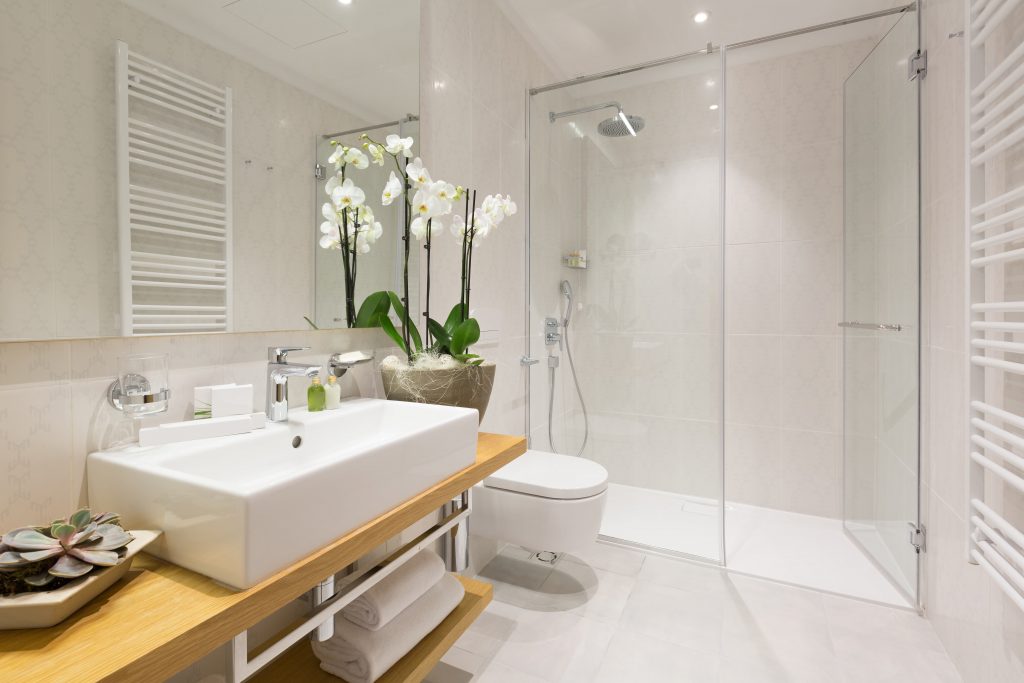
27. Getting your towels super fresh and clean: Sometimes, you put towels in the wash but when you remove them – they’re not as fresh and clean as you were hoping for.
To ensure you kill bacteria, remove any traces of mildew and get your towels smelling clean, always wash them on the hottest water temperature you can set your machine at.
Consider adding bleach (for white towels) or vinegar to the rinse cycle at least every few times you wash the towels. And, always make sure you’re using a quality detergent. Adding a ‘booster’ to the detergent, like washing soda or Vanish Oxiclean, might improve the results even more.
Never:
- Add bleach to a colour towel wash
- Use fabric softener or dryer sheets in a towel wash
28. Remove makeup stains from towels: Try putting a tablespoon of bicarbonate of soda in the wash with the towels to remove the marks.
29. Shower curtain: If your shower curtain is looking at all mouldy, bleach it well. You could also try putting the shower curtain into your washing machine too (most are machine washable, but doublecheck before you do this).
30. Dirty shower door tracks: Whilst you have the bleach out, use it to spray down your shower door’s tracks if you have them. This area of your shower can get dirty, pink and mouldy over time.
31. Shower walls: Keep a dish wand in the bathroom (filled with half detergent, half vinegar) for easy cleaning of the shower.
32. Shower glass: Use white vinegar to cleaner to the calcium water stains off your shower’s glass.
33. Improve the effectiveness of bathroom cleaners: While you’re spending time cleaning the bathroom, fill the bath up with a couple of inches of the hottest water you can draw from the tap.
The theory is that heating the bathroom to 10 degrees above the normal room temperature can improve the effectiveness of any alkaline cleaners you’re using (just make sure you leave the cleaning substances on the surfaces for at least five minutes before you rinse off).
34. Toilet brush: Keep your toilet brush clean and smelling fresh by pouring a bit of floor disinfectant into the bottom of the brush holder
35. Showerhead: Remove the showerhead and give it a good soak in vinegar to de-scale it and unclog any holes.
36. Grout on tiles in the bathroom: Use HG anti-mould spray. Leave it for around 15 minutes, and then gently scrub the grout areas with an old toothbrush. Leave it for another few minutes, and then wash off with hot water.
37. Toilet: A wet wipe attached to a screwdriver will help you get into the gap between the back of the toilet seat and the toilet tank.
The kitchen
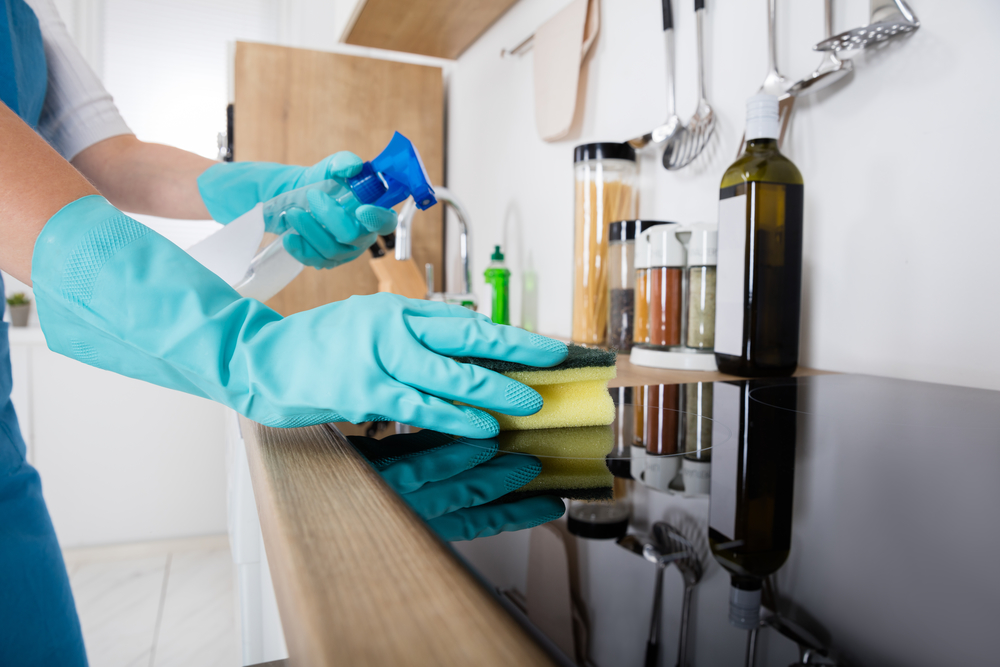
38. Grimy oven top: Scrub the grime off using a mixture of baking soda and hydrogen peroxide – enough to make a paste. Use a washing-up sponge to apply, and you’ll see the gunk comes off surprisingly easily.
To clean a glass cooktop with minimal scrubbing, sprinkle on baking soda, let it soak with a damp towel for about 15 minutes, then gently rub off.
39. Oven-hood filter: Soak your greasy oven-hood filter in boiling water and baking soda.
40. Sanitise the kitchen sink: Firstly, rinse out the sink to make sure any food particles are removed. Put the plug in the sink and pour in a little anti-bacterial soap. Then, boil a kettle of water and pour it into the sink. Let it sit for five to ten minutes, then remove the plug to drain, and rinse.
41. Clean the sink plug hole/drain: Use an old toothbrush, some bicarbonate of soda and lemon juice to clean this area of your sink.
42. Remove rust stains: Cut a lemon in half, dip it in salt and then rub it on the sink surfaces to get rid of any lingering rust stains in and around your sink.
Lemon juice is also useful for removing rust from cutlery.
43. Another way to make your kitchen shine: Polish your taps, the sink, and even the tiles with Turtle Wax. It leaves behind a protective barrier against water and soap build-up.
44. Stainless steel appliances: Rub a small amount of coconut oil on to the appliance and buff away any marks or pesky fingerprints to leave a spotless, shiny surface.
45. Sanitise the washing up sponge: Microwave your sponge to kill 99% of germs and bacteria. Just put in for two minutes, and then leave to cool (Apparently, this is far more effective at killing bacteria than putting it in the dishwasher for a clean).
46. Washing machine mould: Remove the mould from the rubber seal of your washing machine by wiping down the whole area with a white rag soaked in a 50/50 mixture of bleach and warm water.
If there’s still some mould remaining, soak a towel with your bleach mixture, press it firmly into the seal, and leave for half an hour. Then, remove the towel and scrub gently with an old toothbrush.
47. Use mouthwash to clean your washing machine: If your washing machine is dirty, pour half a cup of mouthwash into the empty machine and run it to help disinfect and clean it out.
Alternatively, if your washing machine starts smelling unpleasant, try using two to three cups of distilled white vinegar in the tray, and run it on the hottest setting.
48. Toaster: Use an old toothbrush to clean the inside of your (unplugged) toaster and remove stuck-on crumbs.
49. Cleaning the tops of taps: Soak paper towels in vinegar, then let them sit on the taps to breakdown any build-up.
50. Remove fridge smells: Absorb odours from the refrigerator’s vegetable drawer by lining it with newspaper.
51. Make your freezer smell more pleasant: Wipe the inside of your ice-covered shelves (i.e. not the clear plastic sides of drawers) with a dampened cotton pad which has a couple of drops of vanilla extract on it.
52. Remove rust from cast iron cookware: Soak the item in vinegar until the rust starts to peel off. Then, oil it and bake at 180 degrees for an hour, to finish.
53. Chemical-free microwave cleaner: Remove grease and grime from the inside of your microwave by microwaving a bowl filled with half a cup of water and two squeezed lemon halves for three minutes. Then leave to stand for 5 minutes before carefully removing the bowl and wiping the surfaces clean.
54. Glass cooktop cleaning: Sprinkle on baking soda, let it soak with a damp towel for about 15 minutes, then gently rub the grime away.
55. Home-made drain cleaner: Pour a solution of half a cup of salt for every two pints of hot water poured down the pipe.
56. Make a glassware scrubber from tin foil: To get baked-on food off a glass pan or an oven rack, use washing up liquid and a ball of foil in place of a brillo pad.
57. Clean the coffee maker and kettle: Using a mixture of water and vinegar or water and lemon juice. Boil the kettle/pot of coffee, and then follow this with another few regular uses with normal water, to flush the vinegar mixture completely away.
58. Tea and coffee-stained mugs and teapots: Clean these items by making a paste of baking soda and water, and then gently rub the mixture over the stain to remove. You can also try using lightly salted lemon peel on coffee or tea-stained mugs.
59. Kitchen cupboards: Give the insides a spring clean by using a toothbrush with a paste consisting of baking soda and coconut oil to scrub the surfaces.
60. Food spills: Use flour to clean up saucy food spills. The flour will absorb any excess moisture and then turn the remaining gunk into a congealed substance that’s easier for you to lift off the surface.
Miscellaneous cleaning hacks
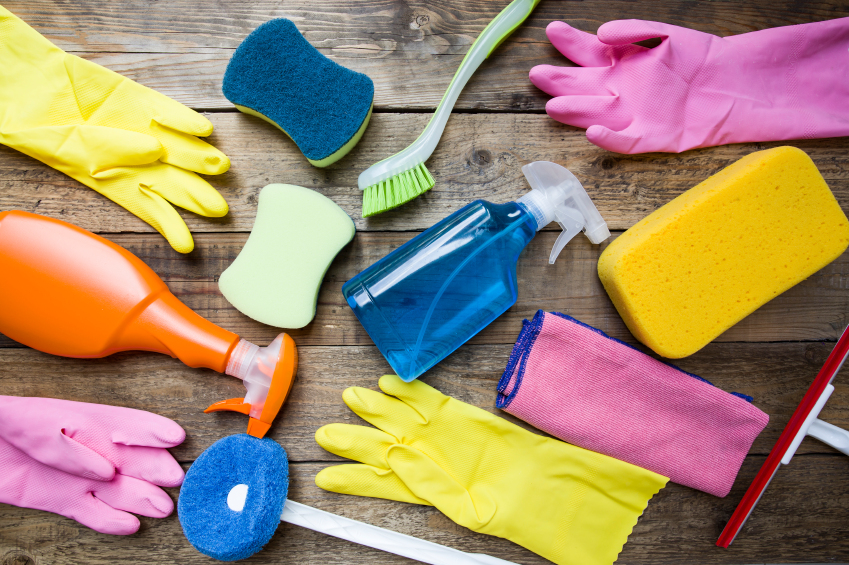
61. Window tracks: Use a cotton swab dipped in vinegar to effectively clean these areas.
62. Venetian blinds: Clean the slats with a pair of tongs and a couple of microfiber cloths sprayed with a little vinegar and water. A paintbrush also handily doubles up as a duster when it comes to cleaning the tricky to reach corners of your blinds
63. Dusty light bulbs: Use a clean, dry paintbrush to gently dust your light fixings.
64. Dusty candle tops: Clean any dust from candles using a cotton ball and some rubbing alcohol.
65. A streak-free window clean: Make an all-natural, streak-free window washing liquid by combining 1 cup of water, 1 cup of vinegar and 3 drops of washing up liquid. Then, spray your windows with the liquid mixture and wipe with a white cloth. Buff the windowpanes with some scrunched-up newspaper to finish.
66. Safely remove pieces of broken glass from a surface: Use a slice of bread to pick up pieces of broken glass – even the tiniest slivers will cling to it.
67. An alternative use for a collapsible laundry basket: Cylindrical, collapsible laundry baskets can double as bins – just insert your bin liner before you begin your tidy up. Far easier to put things in this than a flimsy black bin bag that you have to keep holding open.
68. Clean your TV screen in a surprising way: Use a clean and dry coffee filter to wipe down a dusty, lint-covered TV screen.
69. Remove sticky residue from an iron: Run the hot iron (not on the steam setting) over the plain paper that has been liberally sprinkled with salt.
70. Dusting the corners of the ceiling: Place a duster or a clean rag over the bristles of your broom and secure it with a rubber band. Then use the long handle to dust areas that your arms can’t reach.
71. Easily collect small toys up: If your property includes a play box full of toys and games for guests bringing their small children, you can scoop up small toys after your guests leave with a clean dustpan and brush.
72. Remove tightly wound hair from your vacuum cleaner’s roller: Restore your hoover to its best by cutting any hair or lint from the roller brush.
73. Vacuum filter: Clean your vacuum filter in the dishwasher.
74. Wax on fabric/tablecloth: The best way to remove wax from fabrics is to fill a plastic bag with ice cubes and cover the wax area for around 20 minutes. This should allow the material to more easily peel off.
75. Outdoor rubbish bins: Use toilet cleaner and a toilet brush on your outdoor rubbish bins, then rinse well with a hose.
76. Natural air freshener: Simply boil some water on the hob with a stick of cinnamon or lemon to vaporise odours.
77. Air vents: Use a damp cloth around the end of a knife to clean in between the gaps of an air vent.
78. Remove dusty cobwebs from your broom: To get rid of the dusty cobwebs that gather at the end of your broom, soak it in some soapy water for an hour, then rinse it off and let it dry.
79. Problem with fruit flies: Use a small, shallow dish filled with apple cider vinegar. Its scent will attract fruit flies.
80. Don’t just use the hoover for floors: Vacuum cleaners are great for removing dust from other surfaces too; bedside tables, inside cupboards, on shelves, on windowsills…
81. Scuff marks on painted walls: Remove even the most stubborn marks with a magic eraser sponge.
82. Watermarks: If your wooden table has been left with a watermark, simply blast a hairdryer over it or use mayonnaise.
83: Barbecues: Use half an onion to help get wipe the grease off grills.
84. WD40: More than just a lubricator
WD40 has multiple uses around the holiday home – but did you know that one of these can be stain removal? Stains you can use WD40 for include:
- Scuff marks from flooring
- Rust stains
- Ink, crayon, pen marks from most items
Deep cleaning tips for holiday rentals
Providing a safe and clean property has always been one of the highest priorities for holiday let owners and managers. It’s now more important than ever to re-evaluate your cleaning procedures and take measures to clean and disinfect your rental as we aim to reduce the spread of the COVID-19 outbreak. Here are some ‘coronavirus cleansing’ tips to protect your cleaners and guests.
Before trying any of the above we recommend using suitable safety gear (for example, wearing gloves), and always read and follow the manufacturer’s instructions. You should also take care when using bleach products at home.
